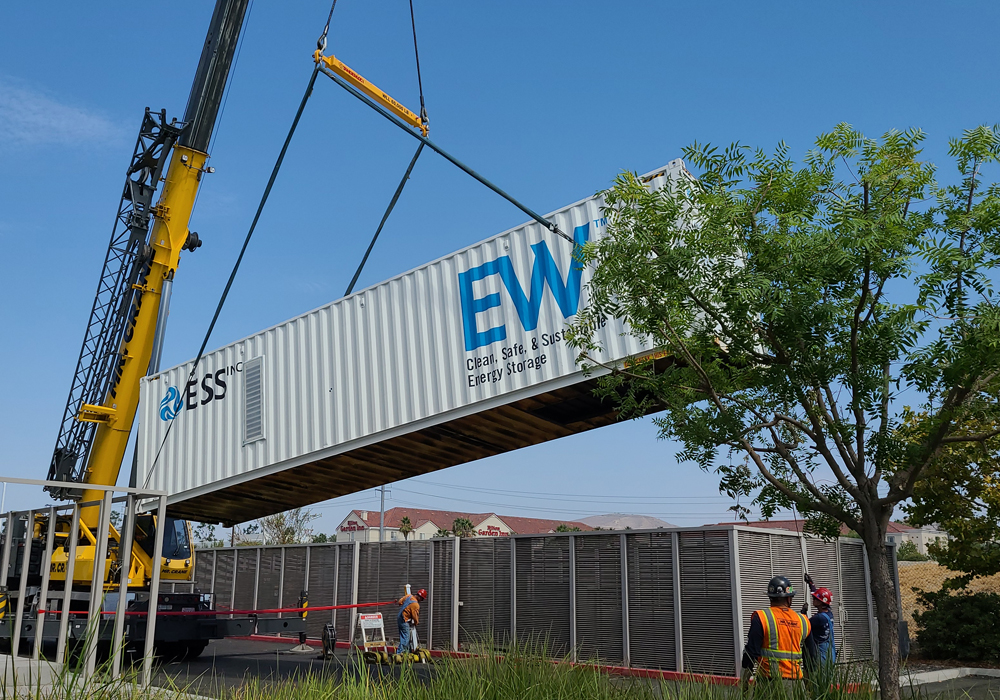By Eric Dresselhuys, CEO
A lot has changed since the initial ratification of the United Nations Framework Convention on Climate Change (UNFCCC) in 1992. At that time, climate change was understood as a threat but the path forward to reduce carbon emissions, while enabling human, technological and industrial development, was uncertain. Now, as world leaders gather for the 27th UNFCCC Conference of Parties (COP 27), the path forward has become much clearer: today, there are commercially available clean energy technologies that can be deployed to build a decarbonized energy system.
We know that energy storage, and in particular, long-duration energy storage (LDES) will play a critical role in this decarbonized energy system. At the first COP, energy storage technology was barely a topic of conversation and to the extent grid-scale storage projects existed, they were primarily pumped hydroelectric in geographically convenient locations. Today, LDES technologies, like the iron flow batteries manufactured by ESS, make it possible to rely upon intermittent wind and solar resources and provide a resilient, reliable and sustainable energy system.
Now that we know we can do this, the theme of many discussions at COP 27 this year is implementation. In short, how do we deploy these technologies quickly and at scale to rapidly decarbonize the global energy system and deliver energy to all who need it?
As utilities, independent power producers and commercial energy users seek to decarbonize the full scope of their systems and operations, selecting the right technology and deploying it efficiently to maximize carbon benefits will be critical for success.
As illustrated in a recent issue brief, published by the CRES Forum in partnership with ESS, LDES can enable rapid carbon reductions, particularly in regions which already have significant solar generation. In these regions, challenges arising from the mismatch between available solar generation and actual energy demand are increasingly apparent and result in wasted clean energy and continued reliance upon fossil fuels to bridge the gap. LDES technologies can now effectively fill that gap instead, replacing fossil-fired generation and immediately reducing carbon emissions by harnessing clean energy that is otherwise wasted.
Achieving deep decarbonization in the electricity sector requires not only the elimination of direct and energy-related carbon emissions, generally known as Scope 1 and Scope 2 emissions, but also requires driving down impacts throughout the energy value chain. When it comes to Scope 3 emissions, or those that result from a company’s full supply chain, not all clean energy technologies are created equal. Various technologies have different, sometimes considerable, lifecycle impacts.
In some cases, lifecycle impacts may include reliance upon critical minerals, with implications for environmental impacts in producing regions with poor governance, and security implications for importing countries.
In all cases, lifecycle carbon emissions associated with production and manufacturing of various storage technologies will have implications for the Scope 3 emissions of utilities and energy users seeking to fully decarbonize their operations.
In an independent assessment conducted at the University of California-Irvine, researchers evaluated the production-related environmental impact of multiple battery chemistries, including ESS’s iron-based technology. The study provided insight into the climate and environmental impacts of various battery technologies across eight categories and found that iron flow batteries had the lowest lifecycle global warming potential of any battery technology evaluated. (You can read more about the carbon impacts of various storage technologies in our lifecycle assessment whitepaper.)
The challenge ahead of the leaders assembled in Sharm el-Sheikh this week is considerable, but today more so than at any time in the past, we have the tools to achieve the deep decarbonization of the global energy economy we urgently need while expanding access to clean energy for all. As we engage with gathered leaders, we look forward to sharing the benefits of iron flow technology and working with key stakeholders to catalyze a clean energy future that provides resilient, accessible and sustainable energy for all.
